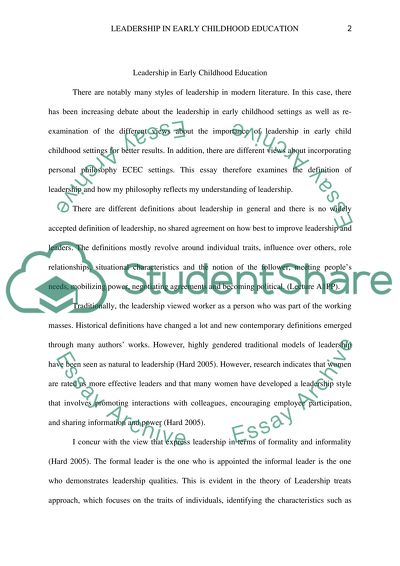Cite this document
(“Leadership in Early Childhood Education Essay Example | Topics and Well Written Essays - 1250 words”, n.d.)
Retrieved from https://studentshare.org/education/1498100-what-is-leadership-what-is-your-leadership
Retrieved from https://studentshare.org/education/1498100-what-is-leadership-what-is-your-leadership
(Leadership in Early Childhood Education Essay Example | Topics and Well Written Essays - 1250 Words)
https://studentshare.org/education/1498100-what-is-leadership-what-is-your-leadership.
https://studentshare.org/education/1498100-what-is-leadership-what-is-your-leadership.
“Leadership in Early Childhood Education Essay Example | Topics and Well Written Essays - 1250 Words”, n.d. https://studentshare.org/education/1498100-what-is-leadership-what-is-your-leadership.


